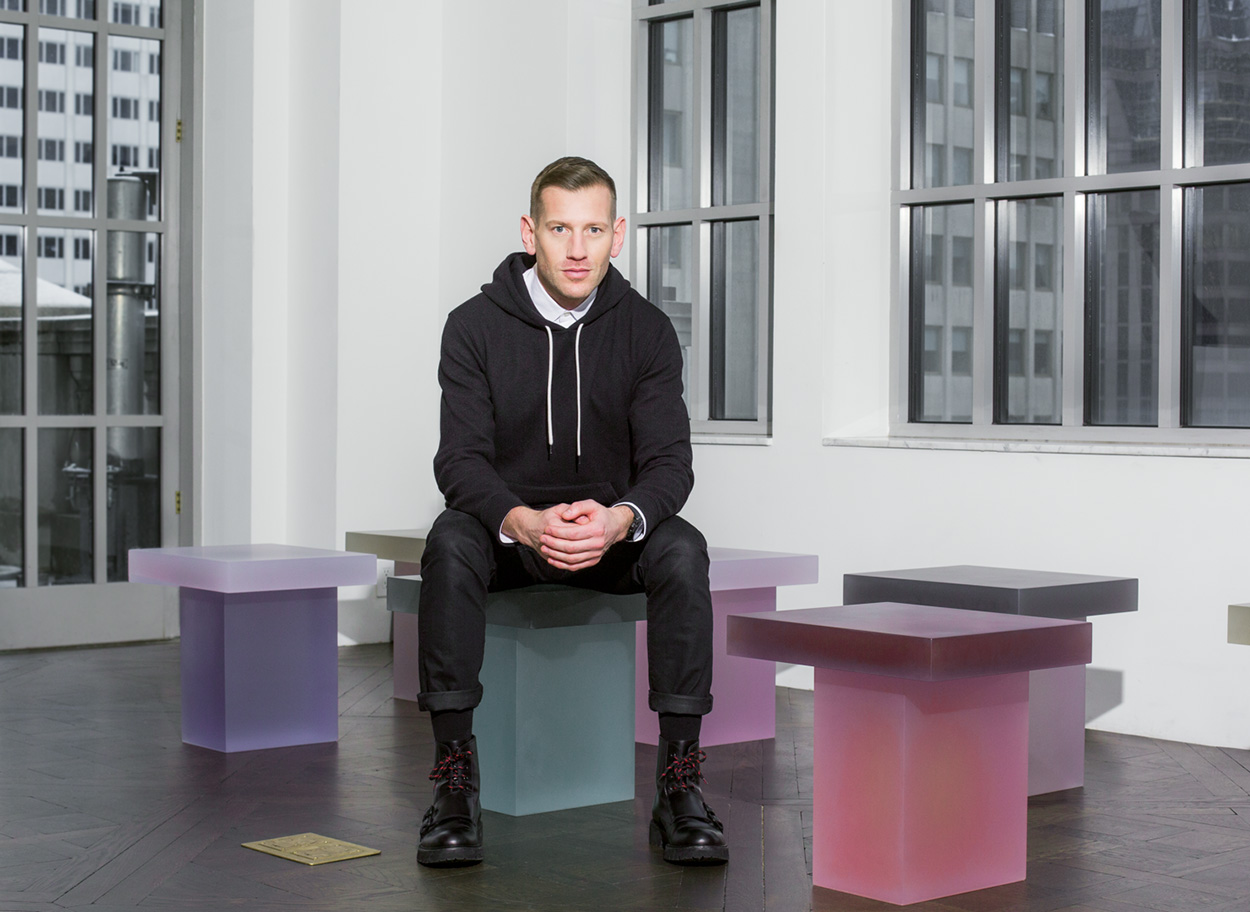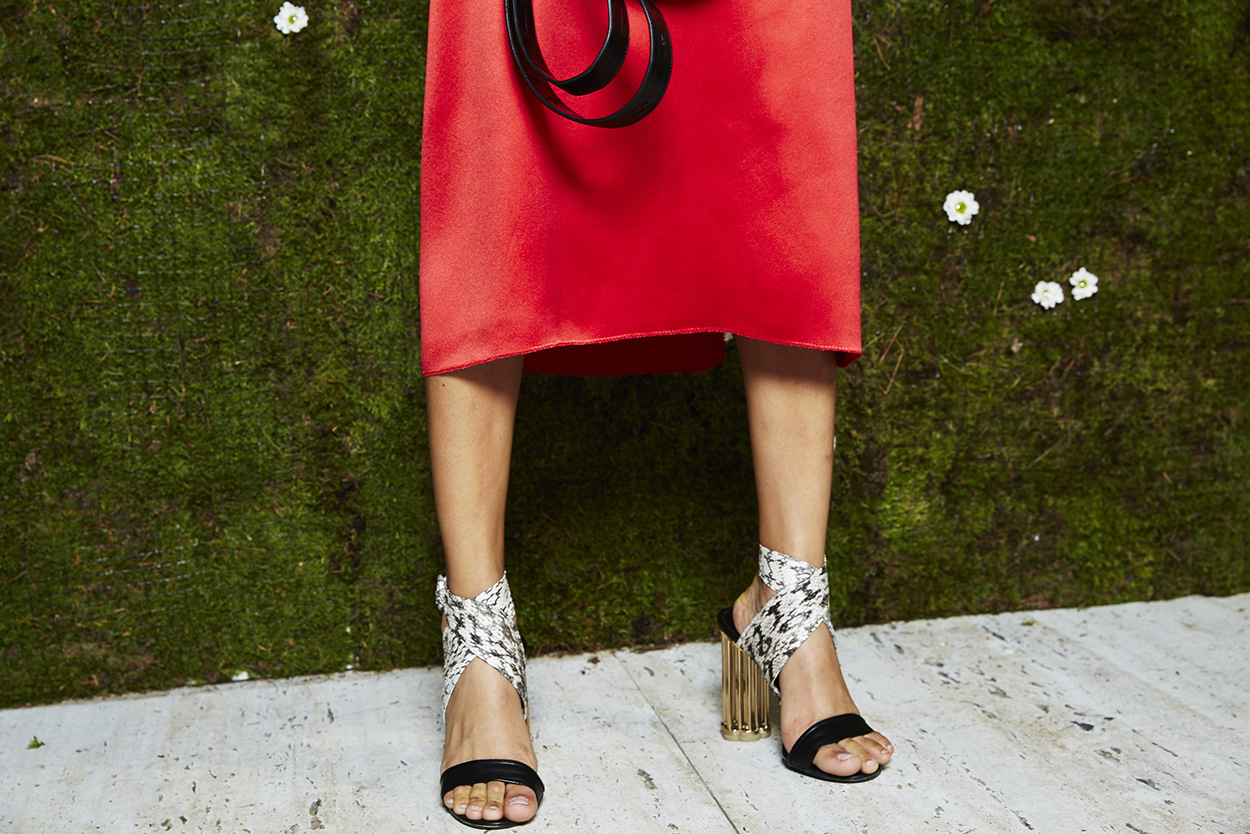In an industry full of heritage brands, how can a fashion house both maintain authenticity and keep up with the times? It’s a question that has no doubt arisen at Salvatore Ferragamo, the Florence-based label known for its deftness in materials and fit. Emerging from a tumultuous three-season run with the its former creative director of womenswear, Fulvio Rigoni, who resigned last October, the brand has entrusted its women’s division to Paul Andrew. The British-born, New York–based footwear designer, who, at the time of Rigoni’s departure, was director of women’s footwear, is returning to the brand’s roots while sampling techniques from fields entirely unrelated to fashion—unveiling a never-before-seen vision of Ferragamo.
Shortly after an apprenticeship in the Alexander McQueen footwear atelier, Andrew moved to New York to work with Narciso Rodriguez, Calvin Klein, and Donna Karan, shaping the footwear identities of major American brands. “It was amazing to dream up all these ideas, and find a home for them,” he says. “[but] I needed to focus on my own design voice.” Andrew founded his namesake label in 2012; its inaugural collection became synonymous with an obsession with materiality, a focus on comfort, and an appreciation for color—values he shares with Salvatore Ferragamo. By recontextualizing these codes for Ferragamo’s current clientele, Andrew is piecing together the house’s contemporary framework.
Unlike its peers, Ferragamo collaborated with lacemakers and basket weavers in the 1930s, turning to fish skins and cork during the World Wars, when leather was scarce. Channeling that maverick spirit, Andrew galvanizes heels in car factories. “I wanted them to have the same metallic finish as an Italian sports car,” he says. Beyond achieving a slick Maserati-esque gloss—an effect meticulously achieved over the course of 11 days—he worked with a car manufacturer to construct a lightweight, cagelike heel that’s balanced and durable enough to support the human body. Like the house’s founder, who studied anatomy at the University of Southern California, Andrew takes a body-centric approach to footwear design. In addition to introducing soft, supportive memory foam soles throughout the collection, he’s transformed the brand’s approach to fit by replacing the shoe lasts used by its design and manufacturing teams. “We have to cater to the width and length of feet today,” he says. “It’s significantly shifted from three decades ago.”
While Ferragamo’s technical strides are a pillar of the label’s legacy, the brand’s eponym’s penchant for bold colors—as seen in his made-to-measure footwear for Hollywood stars including Judy Garland and royalty such as Indira Devi, Maharani of Cooch Behar—are hardly forgotten. “I’m re-engaging with all of his thought processes,” Andrew explains. “[Salvatore] had an incredible appreciation for color.” Fittingly, Andrew insists that leathers be dyed three times for optimal vibrancy and durability.
“Most of all, I respect [Ferragamo’s] dedication to creating gorgeous, comfortable shoes,” Andrew says, noting the crucial role that footwear plays in everyday life. “You can’t just make beautiful shoes.” And that’s why Andrew’s new stride for Ferragamo resonates; it’s at once reverent of tradition, grounded in reality, and limitless in possibility.



